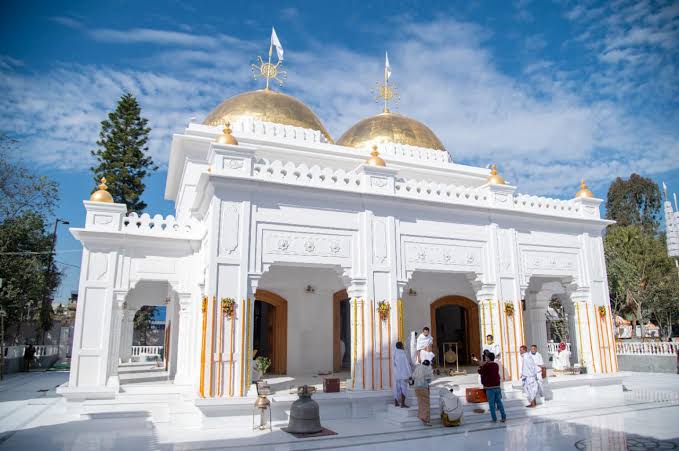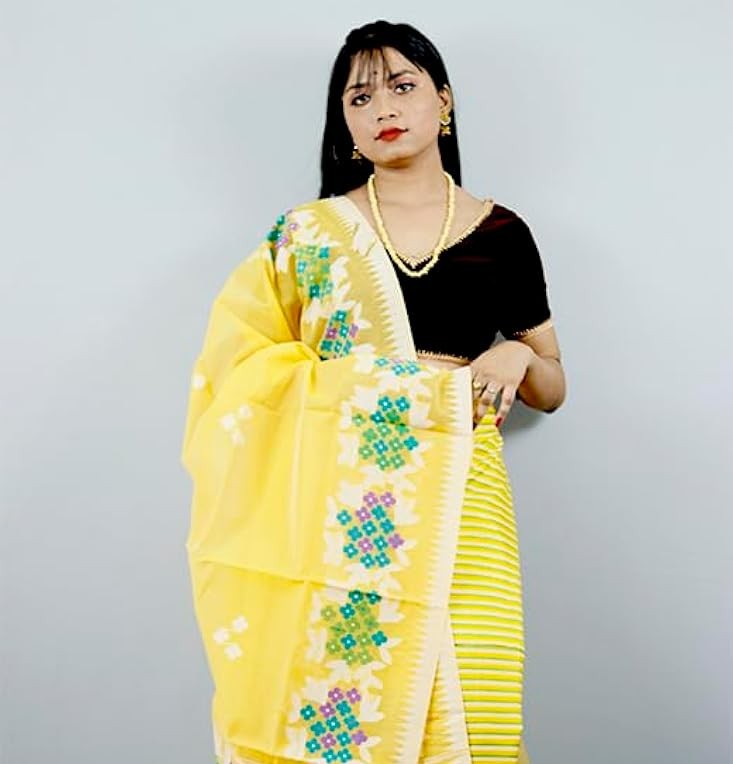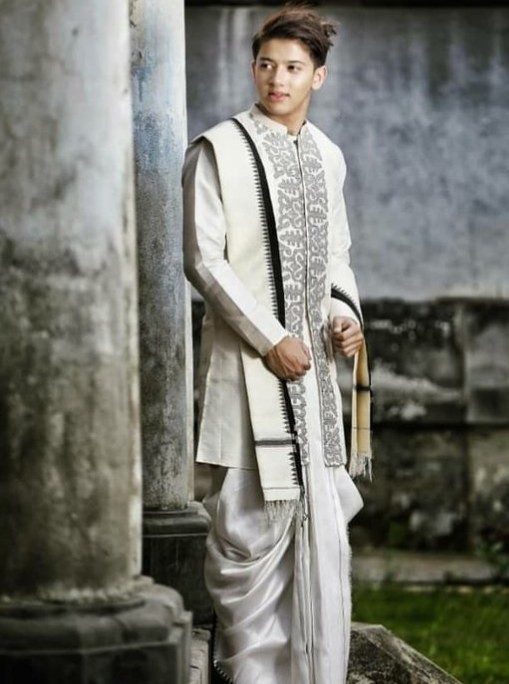

Manipur, located in northeastern India, is a state of breathtaking natural beauty, rich cultural heritage, and unique traditions. Known as the "Jewel of India," it is surrounded by nine hills with an oval-shaped valley at the center. The state is home to diverse ethnic communities including the Meitei, Naga, Kuki, and Pangal peoples, each with distinct cultures and traditions. From the capital Imphal to the historic Kangla Fort, and from the Loktak Lake to the vibrant markets, Manipur presents a fascinating blend of traditional life and contemporary development. The state's classical dance form, Ras Leela, and its martial art, Thang-Ta, are recognized worldwide, while its natural beauty and biodiversity make it a unique destination in India's northeast.

Manipur stands as a testament to the rich historical legacy and cultural heritage of northeastern India. The region's history dates back to ancient times, with references found in historical texts dating to the 1st century AD. The name "Manipur" means "Land of Jewels," reflecting the region's natural beauty and cultural richness. The state has a recorded history of more than 2000 years, with the Kingdom of Manipur being established in 1110 AD.
The region was ruled by the Ningthouja dynasty, which established the Kingdom of Kangleipak (modern Manipur). The kingdom developed a distinct cultural identity characterized by its language, customs, and artistic traditions. Manipur maintained its sovereignty until it became a British protectorate in 1891, and later merged with India in 1949.
Manipur has a rich tradition of classical arts and culture. The Manipuri dance form, particularly the Ras Leela, is one of India's major classical dance traditions. The state is also known for its unique martial art form, Thang-Ta, which combines armed and unarmed combat techniques. The traditional theater form, known as Shumang Leela, continues to be popular among all communities.
The struggle for a separate identity and recognition gained momentum in the 20th century, with various political and social movements advocating for the preservation of Manipur's distinct culture and heritage. After decades of effort, Manipur became a full-fledged state of India on January 21, 1972.
The cultural legacy of Manipur is rich and diverse, with strong traditions in music, dance, theater, and crafts. The state is famous for its classical dance forms, traditional music, and unique theatrical forms. Traditional crafts include handloom weaving, pottery, and bamboo work, which have been preserved through generations and continue to be important economic activities.
Today, Manipur takes immense pride in this heritage of cultural richness and historical significance. The state's formation represents the recognition of its distinct identity within the Indian federation. The values of environmental stewardship, community living, and cultural diversity established by traditional practices continue to shape Manipur's identity in the modern era.
The legacy of Manipur's ancient kingdom and cultural traditions is not just historical; it continues to inspire contemporary Manipuri identity. The Meitei language, with its rich literary tradition, remains a powerful symbol of cultural pride. The traditional knowledge systems related to agriculture, crafts, and medicine offer valuable resources for sustainable development in the modern context.
Manipur is known for its remarkable linguistic diversity, reflecting its rich ethnic heritage and cultural mosaic. The state's language landscape showcases its unique position as home to numerous indigenous communities with distinct languages alongside Meitei (Manipuri), creating a fascinating linguistic tapestry that represents the region's cultural richness.
Meitei, also known as Manipuri, is the official language of Manipur and serves as the primary language for administration, education, and inter-community communication. It is one of the 22 scheduled languages of India and has a rich literary tradition dating back centuries.
The languages of Manipur reflect its unique cultural identity as a meeting point of various ethnic traditions. While Meitei serves as the administrative language and lingua franca, the numerous tribal languages showcase the state's incredible diversity. This linguistic richness truly mirrors Manipur's spirit of cultural harmony and preservation of indigenous identities while embracing broader national integration and development.
Manipur is a state where traditional festivals, Hindu celebrations, and indigenous observances coexist in perfect harmony. The festivals here reflect the state's deep connection with nature, agricultural cycles, and diverse cultural traditions, creating a vibrant tapestry of celebrations throughout the year that showcase Manipur's unique identity as a land where ancient traditions thrive alongside modern life.
Yaoshang is the most important festival of Manipur, celebrated with great enthusiasm across the state. This festival marks the beginning of spring and is celebrated for five days starting from the full moon day of Lamda (February-March). Yaoshang, which is the Manipuri version of Holi, celebrates the rejuvenation of nature and the victory of good over evil. The festival reflects the deep cultural synthesis in Manipur and the joyous spirit of its people.

Yaoshang is not just a festival of colors but a celebration of Manipur's cultural diversity and social harmony. It brings together communities in a grand display of cultural pride and joyous celebration. The festival's unique blend of indigenous traditions, Hindu influences, and contemporary celebrations makes it the true essence of Manipur's spirit as a society that honors its diverse roots while embracing unity and harmony.
Ningol Chakouba is one of the most important and unique festivals of Manipur, celebrated with great enthusiasm across the state. This festival strengthens the bond between brothers and married sisters, where brothers invite their married sisters to their parental home for a grand feast. Ningol Chakouba, which literally means "Invitation of Sisters," reflects the deep family values and social bonds that characterize Manipuri society, particularly among the Meitei community.

In conclusion, Ningol Chakouba is not just a family festival but a magnificent display of Manipuri social values, family bonds, and cultural traditions. It brings together families in a celebration that has been preserved for generations, showcasing the unique social fabric of Manipur and its people's deep connection with family values and traditions.
Ningol Chakouba is more than a family gathering; it is a living tradition that showcases the unique social values of Manipuri society. As one of the most beloved festivals in Manipur, it represents the state's commitment to preserving its social traditions while adapting to contemporary life. The festival stands as a testament to the rich cultural heritage that makes Manipur unique among Indian states.
Cheiraoba is the traditional New Year festival of Manipur, celebrated with great enthusiasm across the state. This festival marks the beginning of the new year according to the Manipuri lunar calendar and is observed on the first day of Sajibu month (usually in April). Cheiraoba showcases the unique cultural identity of Manipur and its people's connection with nature and tradition.
Cheiraoba in Manipur is not just a new year celebration but a reaffirmation of cultural identity and traditional values. From the elaborate rituals to the community feasts, every aspect reflects Manipur's identity as a society that values its traditions while embracing the new. The festival's unique blend of cultural significance, family values, and connection with nature makes it an essential part of Manipur's cultural calendar.
The festivals of Manipur showcase its incredible cultural diversity, agricultural heritage, and social traditions. From the colorful celebrations of Yaoshang to the family-oriented Ningol Chakouba, and from the traditional New Year of Cheiraoba to the boat races of Heikru Hidongba, every festival reflects the state's spirit of unity in diversity. This harmonious coexistence of different traditions makes Manipur a unique example of cultural richness in India, where indigenous wisdom and modern aspirations blend seamlessly, and where diverse cultural traditions create a vibrant cultural mosaic that is distinctly Manipuri.

Manipur, though one of India's smaller states, boasts urban centers that beautifully blend ancient heritage with modern development. Its cities are not only administrative and economic hubs but also custodians of Manipur's unique identity, where traditional culture coexists with contemporary urban life. Each city plays a distinctive role in shaping Manipur's character and pride, reflecting the state's journey from ancient kingdom to modern statehood.
Imphal, the capital city of Manipur, serves as the political, administrative, and cultural heart of the state. Located in the Imphal Valley, this historic city has been the center of Manipuri civilization for centuries. Imphal beautifully balances its role as a state capital with preservation of cultural heritage, making it one of northeastern India's most important urban centers and the face of modern Manipur.

The Kangla Fort in Imphal is one of the most important historical and archaeological sites in Manipur, serving as the ancient capital of the Kingdom of Manipur. This magnificent fort complex showcases the rich cultural, historical, and architectural heritage of Manipur, providing visitors with a comprehensive understanding of the state's royal past and cultural traditions.

The fort complex houses numerous temples, royal buildings, and defensive structures. The most significant structures include the Kangla Sha (the royal temple), the coronation hall, and various gates that showcase traditional Manipuri architecture. The complex also features sacred ponds and spaces that hold religious significance for the people of Manipur.
Kangla Fort is not just an archaeological site but also a living symbol of Manipuri identity and pride. It represents the sovereignty of the Manipuri kingdom and its resistance against external forces. The fort has witnessed numerous historical events, including the Anglo-Manipuri War of 1891, which led to the British occupation of Manipur.
The fort complex is surrounded by a moat and covers a large area in the heart of Imphal. The well-maintained gardens and walking paths make it a popular recreational space for residents and tourists alike. The fort also serves as an important venue for cultural events and festivals.
Today, Kangla Fort stands as a symbol of Manipur's historical legacy and cultural pride. It represents the vision of the Manipuri kings in creating a capital that reflected their power, culture, and religious beliefs, while serving as a center of administration and culture for centuries.
In conclusion, Kangla Fort is much more than a historical monument—it is a living repository of Manipur's soul, telling the story of the land and its people from ancient times to the present day, and serving as a bridge between the past and future of this vibrant state.
/30-stades/media/media_files/Lh5ArB4uSLpPkcZwRX7O.jpg)
Loktak Lake in Manipur is the largest freshwater lake in Northeast India, famous for its unique floating islands called phumdis. This magnificent lake represents Manipur's rich biodiversity and ecological significance, while also serving as an important source of livelihood for local communities and a major tourist attraction.
The lake features numerous floating phumdis, which are heterogeneous masses of vegetation, soil, and organic matter at various stages of decomposition. The most famous of these is the Keibul Lamjao National Park, the world's only floating national park and the last natural habitat of the endangered Sangai deer (Manipur brow-antlered deer). The park is a UNESCO World Heritage Site candidate and represents a unique ecosystem found nowhere else in the world.
Loktak Lake is not just a natural wonder but also an important economic resource for Manipur. The lake supports fishing communities that have depended on its resources for generations. The traditional fishing practices and the unique relationship between the lake and the people represent a sustainable model of human-nature interaction.
The lake's location near Imphal makes it easily accessible while providing a natural retreat from urban life. The well-maintained viewpoints, boating facilities, and the Sendra Island tourist complex ensure a comfortable and educational experience for visitors. The lake also features the Ithai Barrage, which regulates water levels for hydroelectric power generation.
In conclusion, Loktak Lake is more than just a lake—it is a testament to Manipur's natural wealth and ecological diversity. It represents the state's commitment to environmental conservation and sustainable development, while providing both ecological benefits and livelihood opportunities for local communities.

Shree Govindajee Temple is the largest Vaishnavite temple in Manipur, located in the heart of Imphal. This beautiful temple represents the religious and cultural synthesis that characterizes Manipuri society, combining indigenous traditions with Vaishnavite Hinduism. The temple serves as an important religious center and a symbol of Manipur's spiritual heritage.
The temple features traditional Manipuri architecture with a golden dome, intricate carvings, and beautiful artwork. The main deities worshipped are Lord Krishna (Govindajee), Radha, and Balaram. The temple complex includes other smaller shrines, a large courtyard, and facilities for religious ceremonies and cultural events.
Shree Govindajee Temple is not just a religious site but also an important cultural institution. The temple is closely associated with the development of Manipuri classical dance, particularly the Ras Leela, which is performed in the temple courtyard during festivals. The temple's role in preserving and promoting Manipuri arts and culture makes it a vital institution for cultural preservation.
From a historical perspective, Shree Govindajee Temple represents the influence of Vaishnavism in Manipur, which was introduced by King Kyamba in the 15th century and later promoted by King Bhagyachandra in the 18th century. The temple stands as a testament to the religious tolerance and cultural synthesis that has characterized Manipuri society for centuries.
In conclusion, Shree Govindajee Temple is not just a place of worship but a vital cultural and historical landmark that enhances Imphal's spiritual and cultural landscape. It represents the city's commitment to preserving its religious heritage while serving as a center for community gathering and cultural expression.
The Manipur State Museum in Imphal is a comprehensive museum showcasing the rich cultural, historical, and ethnographic heritage of Manipur. This well-organized museum provides visitors with insights into Manipur's diverse communities, their traditions, and their history, serving as an important educational resource and cultural institution.
The museum houses extensive collections of archaeological artifacts, historical documents, traditional costumes, weapons, musical instruments, and ethnographic materials. The exhibits are organized thematically, covering different aspects of Manipuri culture including the royal history, tribal traditions, performing arts, and natural history. The museum also features a gallery dedicated to the Battle of Imphal during World War II.
The Manipur State Museum is not just a repository of artifacts but also an active institution involved in research, documentation, and cultural preservation. The museum conducts educational programs, workshops, and exhibitions that help promote understanding and appreciation of Manipur's cultural diversity. The library and archives provide valuable resources for researchers and students.
The museum building itself is an architectural landmark, designed to reflect traditional Manipuri elements while providing modern facilities for visitors. The surrounding gardens and the peaceful environment make it a pleasant place for learning and reflection.
Today, the Manipur State Museum stands as a symbol of Manipur's commitment to preserving and promoting its cultural heritage. It represents the vision of creating an institution that would educate future generations about the region's glorious past and diverse cultural traditions.
In conclusion, the Manipur State Museum is more than just a collection of artifacts—it is a living institution that connects Manipur's past with its present and future. It serves as a constant reminder of the rich cultural heritage that defines Manipur's identity and inspires citizens to appreciate and preserve their cultural legacy.
Khwairamband Bazar, also known as Ima Keithel (Mothers' Market), is a unique market in Imphal run entirely by women. This remarkable market represents the important role of women in Manipuri society and economy, showcasing their entrepreneurial spirit and organizational capabilities. The market is not just a commercial space but a cultural institution that reflects the matriarchal aspects of Manipuri society.
The market features numerous stalls selling a wide variety of goods including traditional handicrafts, textiles, pottery, household items, and fresh produce. What makes this market unique is that all the vendors are women, organized into associations that manage the market's operations. The market has a long history dating back centuries and has become a symbol of women's empowerment in Manipur.
Ima Keithel is not just an economic institution but also an important social space where women gather, share information, and support each other. The market serves as a center for community networking and cultural exchange. The women vendors are known for their business acumen and their role in preserving traditional crafts and products.
From a cultural perspective, Ima Keithel represents the unique position of women in Manipuri society, where they have traditionally played significant roles in trade and commerce. The market has survived numerous historical challenges, including World War II, and continues to thrive as a testament to the resilience and entrepreneurial spirit of Manipuri women.
In conclusion, Ima Keithel is more than just a market—it is a symbol of women's empowerment and cultural preservation in Manipur. It represents the understanding that economic development and cultural preservation can go hand in hand when women are at the forefront, creating a model of sustainable commerce that benefits both the economy and the community.
Imphal is more than just a capital city — it is the dynamic heart of Manipur where ancient heritage meets modern development, and where traditional values coexist with contemporary aspirations. From its historical landmarks to its modern infrastructure, from its cultural institutions to its growing economy, Imphal represents the perfect blend of tradition and progress. Truly, Imphal embodies the spirit of Manipur as it moves confidently into the future while honoring its rich historical and cultural heritage, serving as a model for balanced urban development in northeastern India.
Thoubal, located about 25 kilometers from Imphal, is an important commercial and agricultural center in Manipur. This bustling town serves as the headquarters of Thoubal district and is known for its vibrant markets, agricultural production, and growing urban development. Thoubal represents the economic vitality of rural Manipur and its transition towards urbanization while maintaining its agricultural roots.
Thoubal is not just a commercial town but also a symbol of Manipur's rural transformation and economic development. With its vibrant markets, agricultural base, and growing urban amenities, Thoubal rightfully earns its place as an important urban center in Manipur, making it a proud representative of Manipur's economic capabilities and its journey from traditional rural society to modern urban development.
Moreh, located on the India-Myanmar border, is an important border town and trade center in Manipur. This strategic town serves as India's gateway to Southeast Asia and is known for its cross-border trade, diverse population, and unique cultural mix. Moreh represents Manipur's strategic importance in India's Act East Policy and its potential as a bridge between South Asia and Southeast Asia.
Moreh stands as a symbol of Manipur's strategic importance and international connections. From the bustling border trade to the unique cultural mix, and from the growing infrastructure to the strategic significance, the town reflects Manipur's potential as a gateway to Southeast Asia. Its role as the main border town makes Moreh an essential component of Manipur's economic and strategic landscape.
The cities of Manipur reflect the diverse character and multiple dimensions of the state. While Imphal showcases governance and cultural heritage, Thoubal represents commercial vitality and rural transformation, and Moreh demonstrates strategic importance and international connections. Together, these urban centers present a comprehensive picture of Manipur's journey from ancient kingdom to modern statehood, balancing economic development with cultural preservation, urban growth with environmental consciousness, and local identity with international connections.
The fashion of Manipur is a vibrant reflection of its rich cultural heritage, ethnic diversity, and artistic traditions. Clothing in the state represents a beautiful synthesis of indigenous tribal traditions, classical influences, and contemporary adaptations. From elaborate traditional costumes worn during festivals and dance performances to everyday practical wear suited for the local climate and lifestyle, Manipur's clothing scene offers a fascinating glimpse into the state's cultural identity and social evolution, showcasing how tradition and modernity coexist in this northeastern Indian state.
Manipuri women's traditional attire is a spectacular display of cultural richness, artistic expression, and ethnic identity. From the elaborate costumes of classical dancers to the everyday wear of rural women, Manipur's female fashion showcases incredible diversity and craftsmanship. These outfits are worn with pride during festivals, weddings, and cultural ceremonies, representing the state's living cultural heritage and the artistic skills passed down through generations of women.

Traditional women's fashion in Manipur is a magnificent display of cultural diversity, artistic excellence, and identity pride. From the intricate patterns of the Phanek to the delicate weave of the Innaphi, and from classical dance costumes to everyday wear, Manipur's female fashion continues to reflect the rich heritage and living traditions of the state's diverse communities. It represents not just clothing but a comprehensive system of cultural expression that connects women to their heritage, community, and artistic traditions, while adapting to contemporary life and changing social contexts.
Manipuri men's traditional attire reflects the state's cultural diversity, with distinct styles for different communities and occasions. The clothing varies from simple functional wear for daily activities to more elaborate costumes for festivals and ceremonies. Even in modern times, traditional attire is proudly worn during cultural events, festivals, and important occasions, showcasing Manipur's rich sartorial heritage and the cultural significance embedded in traditional clothing designs.

Traditional men's fashion in Manipur is a vibrant expression of the state's cultural diversity and heritage. From the distinct classical dance attire to practical daily wear, and from ceremonial costumes to modern adaptations, each element tells the story of Manipur's complex cultural tapestry and its people's pride in their identity, while demonstrating how traditional clothing has evolved to meet changing needs and contexts while preserving its cultural essence.
Manipur is home to numerous tribal communities, each with its unique traditional attire that reflects their distinct cultural identity and heritage. The tribal fashion of Manipur showcases incredible diversity in terms of materials, designs, colors, and accessories, representing the rich cultural mosaic of the state. From the vibrant costumes of the Naga tribes to the distinctive attire of the Kuki communities, tribal fashion in Manipur is a living tradition that continues to evolve while maintaining its cultural roots.
Manipur's tribal fashion is a living heritage of artistic excellence, cultural significance, and community identity. From the intricate handloom weaves to the symbolic patterns, and from traditional dyeing techniques to contemporary adaptations, these textiles not only clothe the people but also tell the story of Manipur's diverse communities, their relationship with nature, and their cultural pride. They represent the state's rich artistic tradition and its potential for cultural preservation and innovation, while serving as a vibrant expression of ethnic identity in a rapidly changing world.
While Manipur is deeply rooted in traditional attire, modern fashion has made significant inroads, especially in urban areas like Imphal and among the younger generation. Today, people creatively blend Western clothing, contemporary Indian styles, and traditional elements to create a unique fashion identity. Manipur's fashion scene reflects its evolving urban culture, youth aspirations, and global connections while maintaining strong cultural roots, creating a dynamic fashion landscape that honors tradition while embracing change and innovation.
Modern fashion in Manipur represents a dynamic dialogue between tradition and innovation. While urban youth embrace global trends and new expressions, cultural events and special occasions still honor Manipur's heritage through traditional wear. This creative combination of old and new makes Manipur's fashion scene vibrant and evolving, where clothing becomes a medium of cultural expression, personal identity, and social change, reflecting the state's journey from traditional society to a modern Indian state with a unique cultural identity.
Manipur's fashion is a beautiful reflection of the state's cultural diversity, natural environment, and social evolution. From the intricate traditional costumes of different communities to practical daily wear suited to the local climate, and from handloom textiles to modern fusion wear, the state's clothing heritage continues to evolve while maintaining its unique identity. It not only represents the cultural pride of Manipur's diverse communities but also demonstrates their ability to adapt and innovate, creating a fashion landscape that honors the past while embracing the future, much like the state itself which balances its rich cultural heritage with modern development and aspirations.